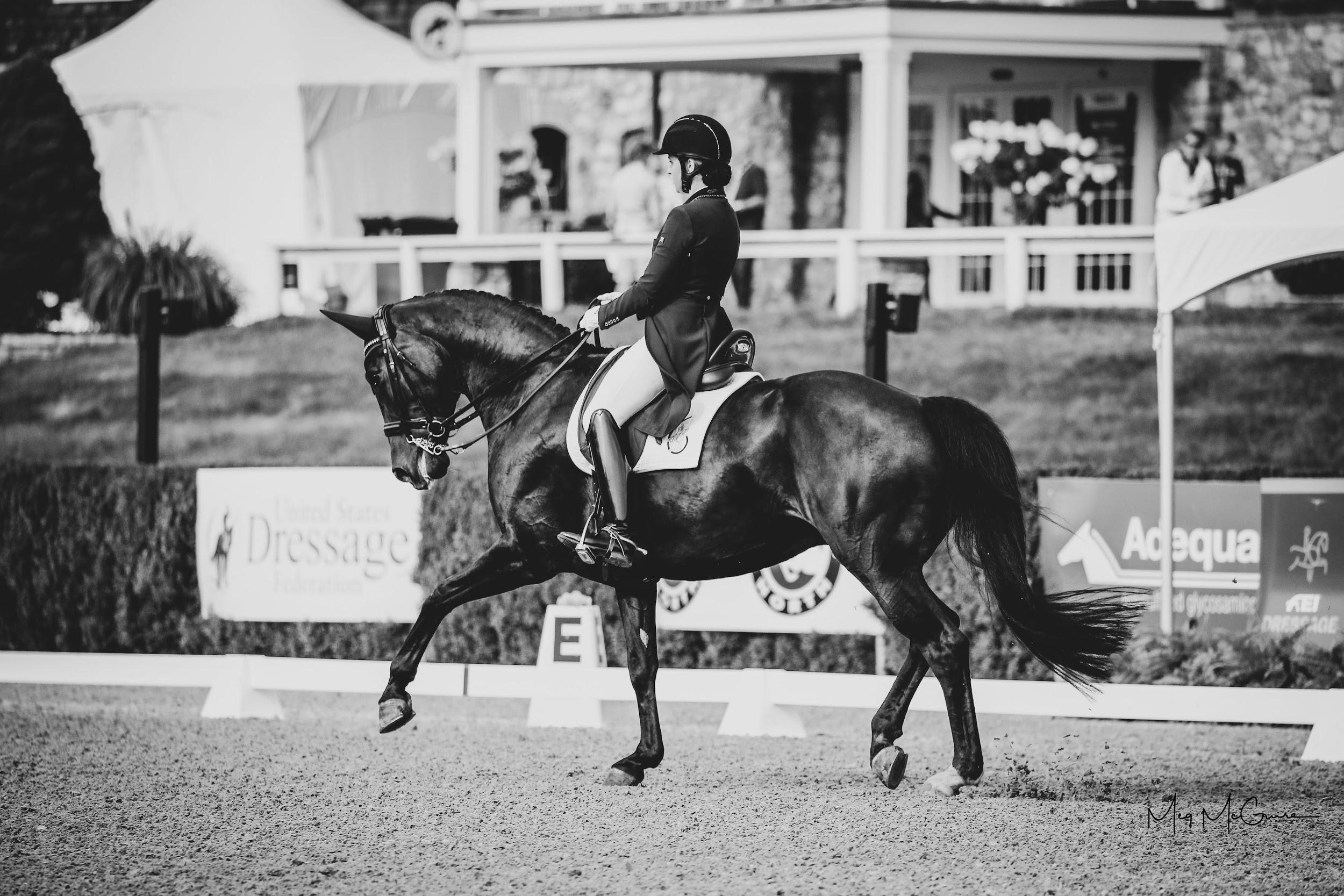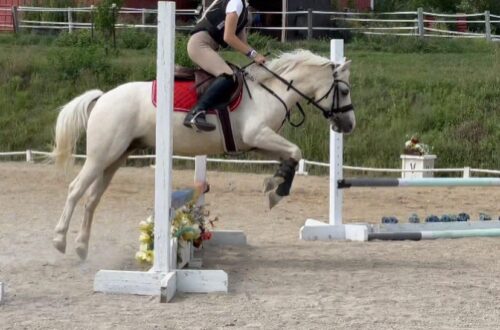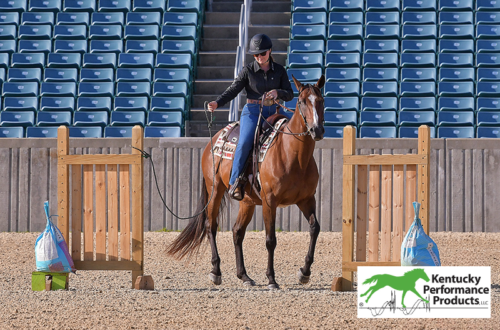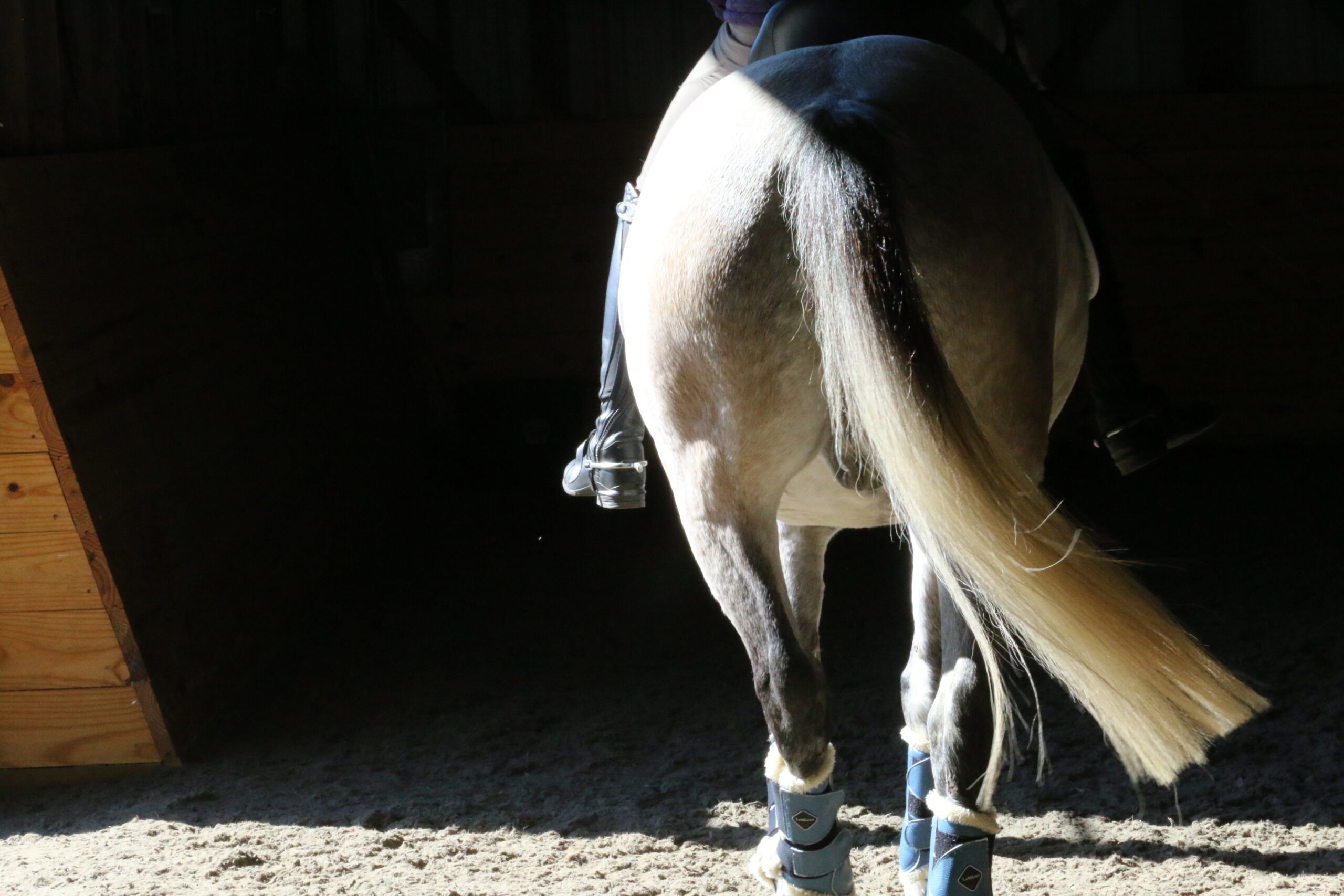
No Stirrups November for Intermediate Riders
To continue with No Stirrups November, let’s move to the next level. Our next lesson is learning to ride the rising trot without stirrups. Your eventual goal is to ride all gaits safely and correctly with no stirrups, but this takes time and practice!
In order to ride without stirrups at a rising trot, you must develop your balance plus enough strength in your core and legs. This takes regular weekly practice. Riding without stirrups has many great benefits. It will build your leg strength, increase suppleness, and help you develop a secure and independent seat, which is a goal of all riding disciplines.
As mentioned in No-Stirrups November for Beginners, being longed is a fantastic way to develop a good basic balanced position. The more longe lessons you can take, the sooner you will start to see the benefits mentioned above.
Posting Trot Without Stirrups
Are you ready now to tackle the rising trot without stirrups? Posting, or performing the rising trot without stirrups, helps develop muscle control and balance, strong legs, and an independent seat. If you jump or eventually want to learn to jump, posting without stirrups will build a solid foundation for your jumping position, but only if it’s done correctly.
You can practice posting with no stirrups off the longe line. Remember to cross your stirrup leathers and irons correctly over the pommel so they don’t bang on the horse’s side.
NO-STIRRUPS POSTING TROT PRACTICE TIPS

Half-Seat or 2-Point Position Without Stirrups
Once you’ve mastered the rising trot without stirrups, performing the half-seat (2-point position) without stirrups is the next challenge. This exercise is more difficult than sitting or posting without stirrups, but it will develop strong legs and good balance and prepare you for jumping without stirrups.
Here are some exercise tips for riding in half-seat (2-point position) without stirrups:
NO-STIRRUPS 2-POINT PRACTICE TIPS
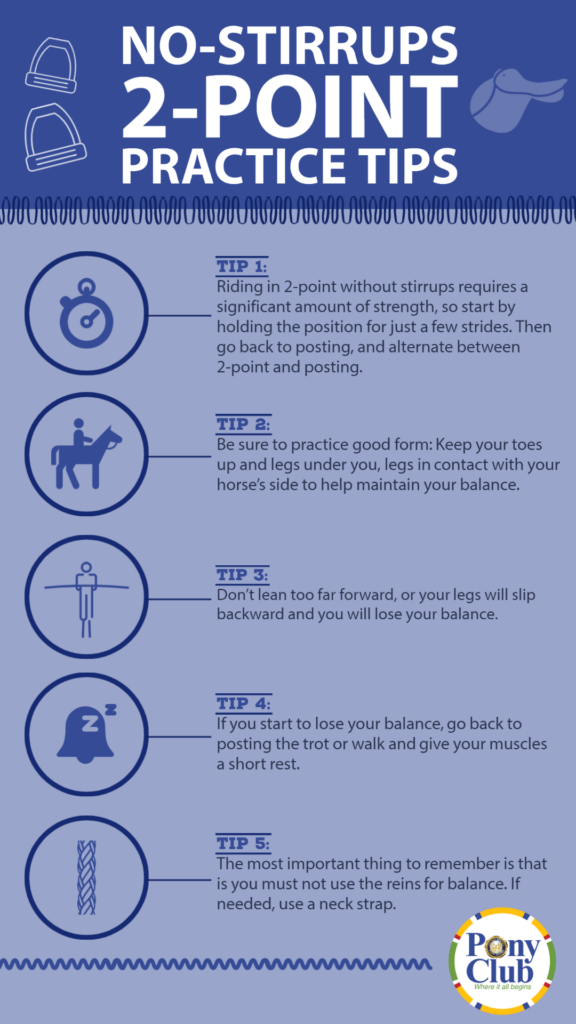
Good luck with these exercises and have fun challenging yourself as you work to improve your strength and balance for whatever type of riding you choose to do.
For more ideas and detail check out the USPC Manual of Horsemanship, Intermediate Level, 2nd Edition.
